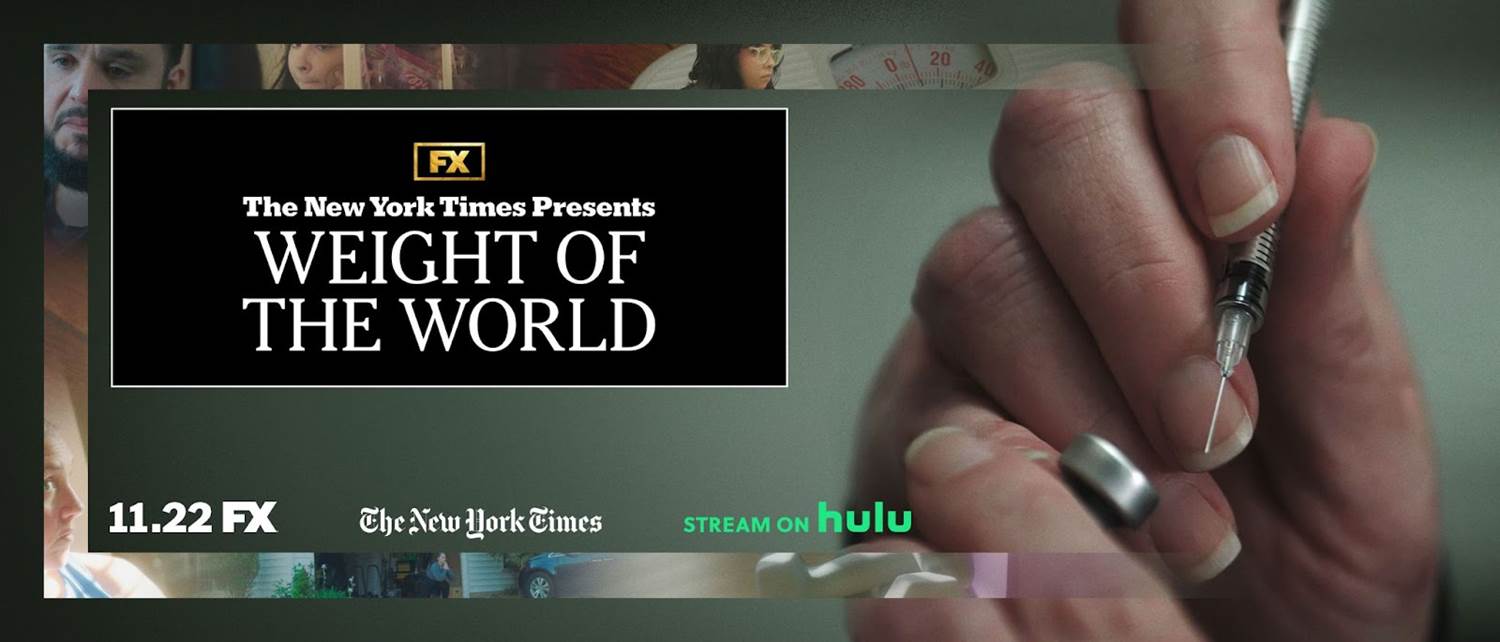TV Review: Personal Stories Shine in “Weight of the World,” A Cautionary Tale on GLP-1s
The fourth installment of Season 3 of FX’s The New York Times Presents premieres Friday, November 22nd, at 10/9c. Titled “Weight of the World," this documentary examines the world’s obsession with weight loss fads and how GLP-1’s (medications like Ozempic and Mounjaro) change the narrative. A panel of experts weigh in throughout the special, which otherwise grounds the story through three personal stories.

(FX)
At the center of “Weight of the World" are three individuals who have struggled with their weight journeys, each of whom seems to have publicly shared their experiences on social media before joining this special. After having gastric bypass surgery, Liz Sanchez didn’t understand why she couldn’t lose weight in her legs until she found out about lipedema, a condition that is hard to treat without GLP-1s. Obesity has been a lifelong struggle for Jeffrey Luxmore, who has never been able to achieve much success through regular diet and exercise and hopes that losing weight will help him on his journey to find love. 14-year-old Jennavecia Arrellin has polycystic ovary syndrome (PCOS), participating in a limited clinical trial to see how Wegovy can help.
The three personal narratives in “Weight of the World" evaluate the pros and cons of GLP-1s. In the case of all three subjects, viewers take away a sense of hope and optimism for what can be achieved through these new medications. And that’s where the rest of the panel fills in the gaps. Led by New York Times reporter Dani Blum, the panel includes medical professionals (Dr. Stuart Rich and Dr. Andrew Kraftson), scientists (Tressie McMillan Cottom, Christy Harrison, and Rebecca Puhl), and authors (Roxanne Gay and Virgie Tovar) who examine the longlasting impact of social stigmas surrounding weight and the pratfalls of “miracle" weight loss drugs.
With an estimated 30 million people taking GLP-1s by 2030, “Weight of the World" tries to instill caution in viewers about these new drugs and how much is still unknown about them. It lightly touches on problems related to muscle loss and bone weakness but also clarifies that the expanded use of these medications is still so new that we don’t know all of the risks yet. In particular, it underlines the more significant risks of obtaining GLP-1s through unregulated compound pharmacies to circumvent insurance coverage issues or the high prices charged by the two companies that make these drugs - Eli Lilly (Mounjaro and Zepbound) and Novo Nordisk (Ozempic and Wegovy).
What I found most fascinating was the evolution of weight loss fads in America. The commentators construct a narrative that dates back to the launch of Weight Watchers in the mid-century and track the snowball effect these messages had, particularly underlining the rising rates of eating disorders. There’s a brief commentary about institutionalized problems surrounding the ease of getting chemical-rich fatty foods and the difficulty of acquiring naturally healthy alternatives. If the special has a flaw, it’s an overemphasis on Oprah, placing what feels like a disproportionate level of blame on the TV personality’s public struggles with her weight as a driving force behind major cultural shifts.
What I take from “Weight of the World" is the joy and optimism that participants Liz, Jeffrey, and Jennavecia have. Maybe someday, the cons of taking GLP-1s will outweigh their pros. But if this installment of The New York Times Presents intended to deter viewers who were curious about these drugs, what it mostly does is promote them with a sensible warning about the unknown.
The New York Times Presents: “Weight of the World" premieres on Friday, November 22nd, at 10 pm ET/PT on FX. The special will be available to stream the next day on Hulu (and Disney+ with a bundled subscription).


